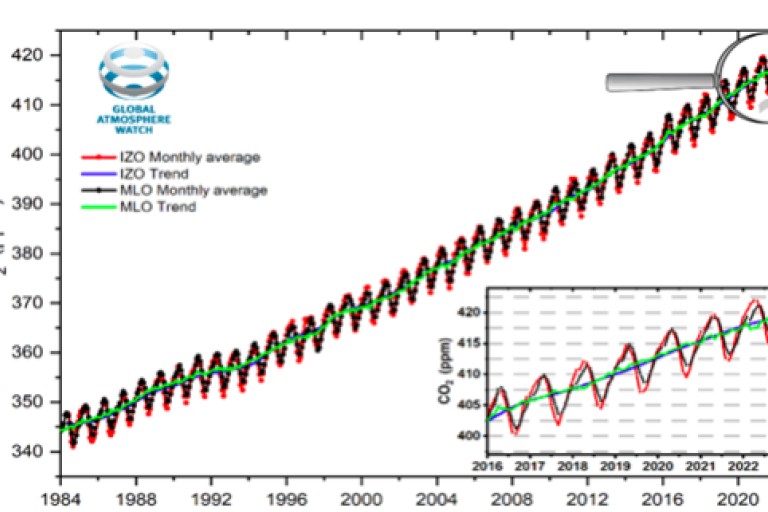Atmospheric CO2 monitoring continues despite Mauna Loa volcanic disruption: AEMET (Spain)

The ongoing volcanic eruption at Mauna Loa in Hawaii has caused the Mauna Loa Observatory (MLO) data series to be temporarily interrupted since November 29. But this does not mean that atmospheric CO2 monitoring has not been interrupted.
The US National Atmospheric and Oceanic Administration (NOAA), apart from Mauna Loa, manages three other continuous CO2 measurement stations under background conditions (Barrow-Alaska; American-Samoa; and South Pole-Antarctica).
On a global scale, more than a hundred stations currently measure CO2 in sites representative of very different environmental conditions and climates, contributing to the Global Atmosphere Watch (GAW) Program of the World Meteorological Organization (WMO). Moreover, Europe manages the Integrated Carbon Observation System (ICOS) research infrastructure whose network of 150 stations monitor CO2 and other gases in the atmosphere, oceans and major ecosystems.
The Mauna Loa Observatory (MLO) holds the world's longest record of surface atmospheric carbon dioxide (CO2) measurements. In March 1958, C. David Keeling of the Scripps Institution of Oceanography (https://scripps.ucsd.edu/) implemented the CO2 observing program at a National Oceanic and Atmospheric Administration (NOAA) facility [1]. In May 1974, NOAA started its own CO2 measurement program and since then both observing programs have been operating in parallel [2,3]. The graph that shows the evolution of the CO2 concentration in MLO since 1958 is known as the Keeling curve.
As an example, and to show that the information on CO2 concentrations in the atmosphere provided by Mauna Loa is also provided by other stations, below we compare the CO2 concentration data recorded at MLO and at the Izaña Observatory (IZO) from 1984. IZO is managed by the State Meteorological Agency (AEMET) through the Izaña Atmospheric Research Center. IZO began its atmospheric CO2 concentration measurement program in 1984, largely by replicating the CO2 measurement program established at Mauna Loa.
In fact, the German researchers who, a decade earlier, had proposed Izaña as a station for the Background Atmospheric Pollution Monitoring Network (BAPMoN) referred to Izaña as the “European Mauna-Loa”. IZO has contributed to the Global Atmosphere Watch (GAW) Program of the World Meteorological Organization (WMO) since 1989, the year this network was created, but also to the NOAA CO2 database (ObsPack CO2 Data).
More information: The Mauna Loa Observatory interrupts its observations due to the volcanic eruption, but the atmospheric CO2 monitoring at global scale goes on
- WMO Member:
- Spain ,
- United States of America

